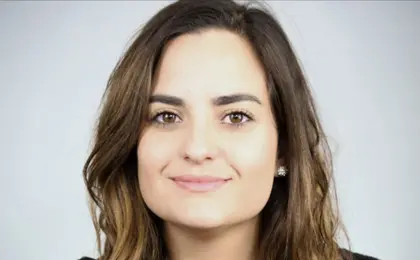
Internship Spotlight: Henry Elliman ’22, National Park Service, Yosemite National Park
Henry Elliman ’22 on writing a business plan for medical services during a summer internship at Yosemite.
What are you doing this summer? We asked rising second-year MBA students to check in from their summer internships, where they’re applying the lessons of their first year at Yale SOM.
Henry Elliman ’22
Internship: National Park Service, Yosemite National Park
Hometown: New York, New York
Pronouns: he/him/his
Clubs and affiliations: Club leader for Design and Innovation. Member of Nonprofit Board Fellows (CitySeed); Technology Club; Data Analytics Club; and the Food, Agriculture, and Beverage Club. Yale Center for Customer Insights consultant for DoorDash (fall 2021)
Favorite SOM class: Competitor
Favorite SOM professor: Mushfiq Mobarak
Favorite New Haven eatery: Olmo Bagelry
For 10 weeks this summer, I lived and worked in Yosemite National Park as a business management consultant for the National Park Service (NPS). On my commute to work, I passed black bears, giant sequoias, and waterfalls. At the end of the workday, I strolled through the lush meadows of Yosemite Valley to the Merced River for a swim, the north face of Half Dome illuminated by the setting sun.
As an intern at Yosemite, I wrote a business plan for the medical services in the park. The objective was to determine a financially and operationally sustainable business model to serve the medical needs in Yosemite. The project entailed gathering and analyzing qualitative and quantitative data, designing business models applicable to the Yosemite context, and scaling our findings to inform medical services across the National Park Service. With the COVID-19 pandemic ongoing, I felt especially motivated to provide the park with the strategic guidance needed to keep the Yosemite community healthy.
I engaged with a diverse set of stakeholders daily. I traveled through Yosemite interviewing nurses, law enforcement rangers, budget analysts, and superintendents. I observed the Search and Rescue team, rode in the ambulance, and inspected the helicopter. I reviewed the $100 million annual budget of Yosemite and combed the park strategic plan. I liaised with lawyers to leverage new legislation and deciphered accounts receivable with medical billing companies. Throughout my fully in-person internship, I immersed myself in the complex nuances of government, healthcare, and business enterprises.
Yosemite is a complex context for healthcare and business. On any given day, there are about 25,000 people in the park. This population includes visitors and residents. The park has emergency medical services and a clinic serving this population. The population is vulnerable to adverse health outcomes because the park has dangerous hazards (snakes, bears, rocks, heat, fires, etc.) and is far from hospitals that offer comprehensive care. The closest medical facility is an hour-and-a-half drive. Rural healthcare is not a profitable business venture, so providing these medical services comes at a significant cost to the park. It was my job to determine what services to provide, how much they would cost, and how best to sustain these lifesaving services.
To accomplish this task, I relied on several frameworks taught in the integrated curriculum at SOM. For example, I optimizing staffing using equations taught by Dean Jain in Modeling Managerial Decisions. Then, I refined recruiting practices by aligning intrinsic and extrinsic motivating factors like Professor Baron teaches in Workforce. In reviewing and modeling financial statements, I relied on principles from Accounting and Sourcing and Managing Funds. The integrated curriculum allowed me to draw from multiple disciplines to understand and evaluate interconnected components of the medical services in Yosemite.
But I was not alone in my work: I collaborated with a co-intern at Yosemite and two Yale students (one from SOM and one from the Yale School of the Environment [YSE]) who worked with NPS in other parks. Even before traveling to Yosemite, I leaned on my Yale classmates. It was invaluable to broaden my Yale network beyond SOM to learn from students at YSE. Snigdha Rao ’21 was an NPS intern the previous year and blazed the path for more Yale interns than ever.
I recommended a two-pronged strategy to improve the current financial management of the medical clinic while transiting to a new operational model. The strategy increased revenue potential by 20 times by using data to identify opportunities for efficiency and growth. The new operational model expanded services by 25% for 2,000-plus more patients by negotiating service contract business opportunities and proposing a national medical service strategy for NPS. I am particularly proud that the work solidified the critical purpose of medical services in NPS: to provide primary, urgent, behavioral, and occupational care to residents and visitors in order to maintain and improve the health of the NPS community.
The 10-week internship flew by. There are 800 miles of trails in Yosemite. I hiked about 10% of them. And while I left Yosemite wanting to explore more of the wilderness, I left knowing that my internship made an impact on the park.





